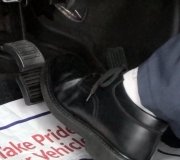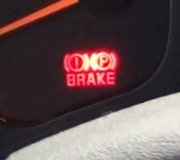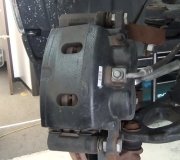Allow me to add a note of great value. Too many people think you have to bleed at the wheels after replacing the master cylinder. That pushes air down the lines, and on about 50 percent of vehicles with ABS, that air gets stuck in two chambers of the hydraulic controller. A scanner is needed to command the ABS Computer to open two valves so that air can be expelled, then you have to complete the procedure by bleeding that air out at two wheels.
Instead, when you replace the master cylinder with two steel lines, loosen the line nuts a little, remove the mounting bolts to the power booster, pull the master cylinder forward, then use it as a handle to bend the steel lines up a little. That will keep the fluid from running out of the lines.
Remove the two lines all the way, then remove the master cylinder. Brake fluid eats paint, so be careful to not allow any to drip onto the car.
Screw the two lines into the new master cylinder that has been bench-bled, then use it to bend those lines back down to their normal shape. Bolt it to the booster, then snug one of the line nuts. Have a helper slowly push the brake pedal half way to the floor. It should take about 15 seconds to do that. You'll see bubbles coming out by that nut. Snug the nut, then holler to the helper to quickly release the pedal.
Do that a second time, and perhaps a third time, until you see only clear fluid with no bubbles coming out, then do that for the other line. By pushing slowly, fluid will get pushed down the lines, and air will float back up. By releasing the pedal quickly, the fluid rushing back will wash the air back up into the reservoir with it. This can even work when working on the car by yourself, just keep the line nuts tight.
Saturday, February 27th, 2021 AT 11:12 AM
(Merged)



